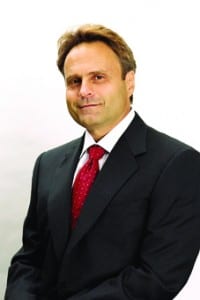By Nick Tattersall
ISTANBUL (Reuters) - Syria's neighbors, wary of stirring a conflict that could spill back over their borders, would be reluctant partners in a U.S.-led intervention but are ultimately likely to support limited military action if widespread use of chemical weapons is proven.
The White House disclosed U.S. intelligence on Thursday that Syria had likely used chemical weapons, a move President Barack Obama had said could trigger unspecified consequences, widely interpreted to include possible U.S. military action.
Syrian neighbors Jordan and Turkey, their support key in any such intervention, have long been vocal critics of Bashar al-Assad. Prime Minister Tayyip Erdogan, an erstwhile ally of the Syrian President, was among the first to call openly for his overthrow while allowing armed opponents to use Turkish soil.
But their rhetoric has been tempered by the changing circumstances of a war that has dragged on beyond their expectations and grown increasingly sectarian, as well as by the suspicion they will be left bearing the consequences of any action orchestrated by Western powers thousands of miles away.
For Turkey's leaders, facing elections next year, talk of chemical weapons is an uncomfortable reminder of the wave of anti-U.S. sentiment which followed the 2003 U.S.-led invasion of Iraq, justified by intelligence on nuclear, chemical and biological weapons that turned out to be erroneous.
Turkey, which shares a 900-km border with Syria, has reacted cautiously to the U.S. disclosure while Jordan, fearful of the growing influence of radical Islamists in the Syrian rebel ranks, has voiced its preference for a political solution.
"The international community, and especially the peoples of the Middle East, have lost confidence in any report which argues that there are weapons of mass destruction or chemical weapons," said one source close to the Turkish government.
"Right now, no-one wants to believe them. And if Assad uses chemical weapons some day ... I still think Turkey's primary reaction would be asking for more support to the opposition rather than an intervention."
Turkey's rhetoric on Syria, at least in public, has toned down markedly over the past six months, even as shelling and gunfire spilled over the border and the influx of refugees to camps on its territory swelled to a quarter of a million.
Foreign Minister Ahmet Davutoglu's push for a foreign-protected "safe zone" inside Syria gained little traction among allies and appears to have quietly slipped from the agenda. Even Erdogan, whose speeches were regularly laced with bellicose anti-Assad rhetoric, mentions the conflict less frequently.
But many analysts believe both the pro-U.S. monarchy in Jordan and Erdogan's government in Ankara would toe the line should Washington seek their cooperation in military action.
Turkey's relations with Washington have at times been prickly - notably in 2003 when it failed to allow the deployment of U.S. forces to Turkey to open a northern front in the Iraq war - but strategic cooperation has generally remained strong.
Turkish support and bases proved vital, for example, to U.S. forces in Afghanistan, while Turkey hosts a U.S.-operated NATO radar system to protect against any regional threat from Iran.
"Given the texture of the current government's relations with the U.S. and given the history of its discourse on Syria, I think it would be not impossible but rather difficult for Mr Erdogan not to oblige U.S. demands," said Faruk Logoglu, former Turkish ambassador to Washington and vice chairman of the main opposition Republican People's Party.
RELUCTANT PARTNERS
Although Obama has warned Syria that using chemical weapons against its own people would cross a "red line", he has also made clear he is in no rush to intervene on the basis of evidence he said was still preliminary.
Syria denies using chemical weapons in the two-year-old conflict in which more than 70,000 people have been killed.
Mindful of the lessons of the start of the Iraq war, aides have insisted Obama will need all the facts before deciding what steps to take. But acknowledgment of the intelligence assessment appears to have moved the United States closer - at least rhetorically - to some sort of action, military or otherwise.
Turkey and Jordan would be key to any such move, but they may prove reluctant.
From the outset, Turkey has felt slighted.
Before the crisis, Erdogan cultivated a friendship with Assad, personal ties which he tried to use after the start of the uprising in March 2011 to persuade the Syrian leader to embrace reform and open dialogue. He was rebuffed.
When his strategy changed, he began calling for Assad's removal and allowing the Syrian opposition to organize on Turkish soil. Ankara felt it gained praise from Washington and its allies but little in the way of concrete support.
"Turkey feels lonely in many senses," the Turkish source said, saying that a military intervention now would leave Turkey and Syria's other neighbors reeling from the consequences.
"There is always the risk of creating more destruction and creating a failed state in Syria ... This thing is happening next door. The flames are reaching us, starting to burn us, where they can't reach the United States, Qatar, or the UK."
Jordan's King Abdullah said last year Assad should step down, but the kingdom is increasingly concerned by the growing strength in Syrian rebel ranks of Islamist fighters who view the monarchy with just as much hostility as they do Assad.
Further fuelling those fears is the presence of fighters from the Nusra Front, which has declared its allegiance to al Qaeda leader Ayman al-Zawahri, among rebels who have taken territory across Syria's southern province of Deraa, only 120 km (75 miles) from the Jordanian capital Amman.
Officials fear Syria has become a magnet for Islamist fighters who could one day turn their guns on Jordan - as Jordanian-born Abu Musab al-Zarqawi did during the sectarian conflict in neighboring Iraq. Zarqawi was widely believed to have been behind simultaneous attacks on Jordanian tourist hotels which killed dozens of people in November 2005.
SENSE OF URGENCY
Such fears could push the U.S. and its allies to act.
"The fact that the opposition is divided cuts both ways. It makes the logistics and even the politics of an intervention more difficult," said Sinan Ulgen of the Istanbul-based Center for Economic and Foreign Policy Studies (EDAM).
"But at the same time it reinforces the urgency of an intervention: the more the international community does not intervene in Syria, the more likely it is that the radical elements will gain the upper hand in a post-Assad Syria."
Turkish officials and diplomats have expressed concern about the role Saudi Arabia may be playing in providing weapons which are going to the hands of radical Islamist elements among the Syrian rebel ranks.
U.S. intelligence agencies believes Assad's forces may have used the nerve agent sarin on a small scale against rebel fighters. The fear is that an increasingly desperate Assad may use such weapons more widely the longer the conflict drags on.
An attack like that on the Iraqi Kurdish city of Halabja - where an estimated 5,000 people died in a poison gas attack ordered by former Iraqi President Saddam Hussein 25 years ago, the most notorious use of chemical weapons in the Middle East in recent history - could sway public opinion in the region.
"A major chemical attack would outrage the Arab and Muslim street ... It would be difficult just to watch, then everyone would intervene," said retired Jordanian air force general Mamoun Abu Nowar.
The role Turkey or Jordan would play in any military action will depend on Washington's strategy, but logistical support for limited missile strikes or possible assistance in enforcing the sort of no-fly zone long advocated by Turkey appear more likely than sending in ground troops.
Turkey is home to NATO's second-largest army and to the Incirlik Air base, which provided logistical support for U.S. troops in Iraq and Afghanistan. It is already hosting hundreds of U.S. soldiers operating part of a NATO Patriot missile system to defend against possible Syrian attack.
Washington meanwhile announced last week it was sending an army headquarters unit - which could theoretically command combat troops - to Jordan, bolstering efforts started last year to plan for contingencies there as Syria's conflict deepens.
"A surgical strike to get the stocks of chemical weapons ... or establishing air superiority through a number of strikes against Syrian air defenses, this is the type of scenario being contemplated in Turkey," said EDAM's Ulgen.
"Anything beyond that is much more difficult to see."
(Additional reporting by Suleiman al-Khalidi and Khaled Oweis in Amman; Writing by Nick Tattersall)
Source: http://news.yahoo.com/syrias-neighbors-cautious-u-led-intervention-120014537.html
mashed potatoes Apple Black Friday how to cook a turkey emma stone Frys tryptophan BestBuy.com











 The Satellite U845t-S4165's dual-core 1.8GHz Intel Core i5-3337U processor is a step up from the Intel Core i5-3317U CPU that appeared in many of the preceding Fall and Winter's ultrabook offerings. As it were, the rest of its class sports the latter processor, with the sole exception being the VAIO T15 Touch. Consequently, in most of our tests the Satellite U845t-S4165 sailed past the competition. Its class-leading PCMark7 score of 4,834 points edged past the Sony T15 Touch (4,112 points) and Toshiba Satellite U945-S4390 (4,025 points) while handily trouncing the Asus VivoBook S400CA-UH51 (3,013 points). Similarly, its Cinebench R11.5 score of 2.48 points was on equal footing with our current Editors' Choice for entry-level touch-screen ultrabooks, the Acer Aspire M5-481PT-6644 (2.48 points), and landed within striking distance of the class-leading Acer Aspire M5-581T-6405 (2.51 points).
The Satellite U845t-S4165's dual-core 1.8GHz Intel Core i5-3337U processor is a step up from the Intel Core i5-3317U CPU that appeared in many of the preceding Fall and Winter's ultrabook offerings. As it were, the rest of its class sports the latter processor, with the sole exception being the VAIO T15 Touch. Consequently, in most of our tests the Satellite U845t-S4165 sailed past the competition. Its class-leading PCMark7 score of 4,834 points edged past the Sony T15 Touch (4,112 points) and Toshiba Satellite U945-S4390 (4,025 points) while handily trouncing the Asus VivoBook S400CA-UH51 (3,013 points). Similarly, its Cinebench R11.5 score of 2.48 points was on equal footing with our current Editors' Choice for entry-level touch-screen ultrabooks, the Acer Aspire M5-481PT-6644 (2.48 points), and landed within striking distance of the class-leading Acer Aspire M5-581T-6405 (2.51 points).
 Tom Campanaro, the CEO of Total Gym?, has been inducted into the National Fitness Hall of Fame.
Tom Campanaro, the CEO of Total Gym?, has been inducted into the National Fitness Hall of Fame.
